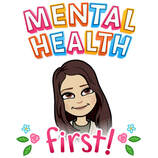 Suicide Prevention Awareness Month is a time to come together to raise awareness, offer support, and reduce stigma around a difficult topic. During this time of dual health and social justice pandemics, the acute and residual effects continue to increase suicide rates and affect communities in disproportionate ways. According to the CDC, suicide is the 2nd leading cause of death for youth ages 10-34. Black, Indigenous, People of Color (BIPOC) and LGBTQ+ students experience life events or stressors that other students do not, and are linked with greater risk. During the pandemic BIPOC, particularly Hispanic and non-Hispanic Black groups, experienced suicide ideation more than other groups in the 30 days before a survey. The Trevor Project reports that LGBTQ+ youth are 5 times more likely to attempt suicide than their heterosexual peers, and 8.4 times more likely than their LGBTQ+ peers when they come from highly rejecting families. These statistics are sobering, however, suicide is preventable! The most effective intervention for suicide is prevention. Acceptance, understanding, belonging, and connection saves lives. According to the Family Acceptance Project, having at least one supportive adult can reduce a LGBTQ+ youth’s risk of suicide. It is essential that as a community we seek to be the person our loved ones and students can talk to without judgment, and that we get help ourselves when we need it. A frequent barrier with suicide prevention is stigma. For example, the language of “commit” suicide is one we use for crimes, where we should instead use the more compassionate descriptor of “died by suicide.” Nobody takes their life for a single reason, and generally when someone dies by suicide, it can be attributed to a combination of various risk factors. It is important to Know the (warning) Signs of a person who is having suicidal thoughts, and for teens, to Seize the Awkward in talking to a friend about their mental health. Talking about suicide is not easy, but there are ways to do it, even while nervous. Assume that you are the only one that will have this important conversation; contrary to popular belief, asking someone about suicide will not put ideas in their head and may actually provide relief. The American Foundation for Suicide Prevention has created prompts for how to start a #RealConvo to help guide you. Finally, though suicide is preventable, in spite of all we do, not all will be prevented. It’s understandable to feel like you should have done something but when we look at the data, even when we have done everything it can still happen. It is important to give ourselves grace and to keep showing up for each other and ourselves. By Sandra Quintana, MUSD Mental Health Program Manager See below for more information and resources. MUSD created resources: Local Crisis Resources, Self-Care, LGBTQ+, Community Mental Health Services & Resources, District-Sponsored Connection to Mental Health Services National Resources: National Suicide Prevention Lifeline: 1-800-273-8255 Nacional de Prevención del Suicidio: 1-888-628-9454 Crisis Text Line: Text TALK to 741741 to NAMI: Navigating a mental health crisis guide Veterans Crisis Line: Call, Chat, Text SAMHSA: Helping Your Loved One Who is Suicidal, Recovery After a Suicide Attempt Suicide Prevention Resource Center: Trainings For Suicide Loss Survivors Suicide Prevention Resource Center guide for Survivors of Suicide Loss American Foundation for Suicide Prevention - “I’ve lost someone” Suicide Awareness Voices of Education Alliance of Hope for Suicide Loss Friends for Survival Comments are closed.
|
NOTICE OF PUBLIC HEARING:
The governing board of Milpitas Unified School District will hold a Public Hearing on Tuesday, June 28, 2022. Media ResourcesArchives
July 2024
Categories |
Milpitas Unified School District
|
|

 RSS Feed
RSS Feed
